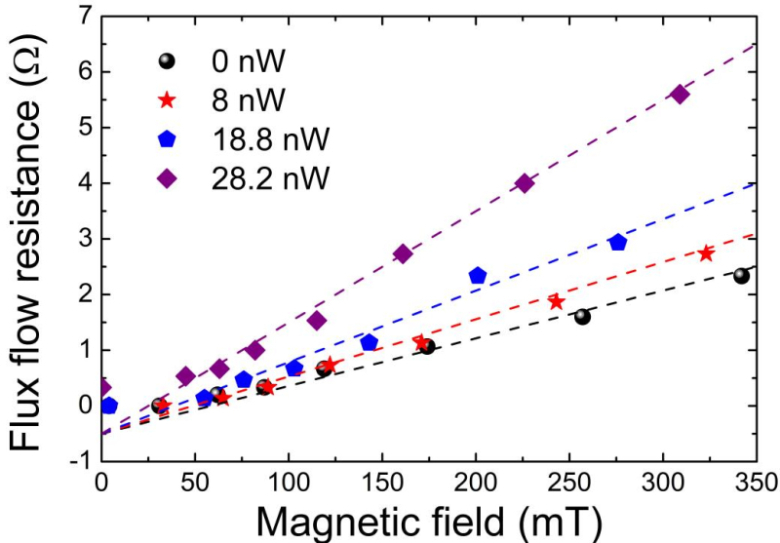Experimental Progresses on Flux-Flow Behaviors of Superconducting HEB Device
In a recent paper by MIAO Wei et al from Purple Mountain Observatory (PMO) of the Chinese Academy of Sciences (CAS), the resistive behaviors of a niobium nitride superconducting HEB device driven by magnetic field and terahertz radiation are studied. It is found that the resistance of the superconducting HEB device emerges due to time-dependent changes of the macroscopic quantum phase by flux-flow events. The flux-flow resistance is found to be increased linearly with magnetic field at low vortex velocities and is enhanced by terahertz radiation, as shown in Fig 1. At high vortex velocities, there is an obvious non-linear change, which can be well interpreted by viscous flux-flow instability predicted by the Larkin and Ovchinnikov theory. In addition, a technique taking use of the device resistance dependence on magnetic field is proposed to stabilize the superconducting HEB device (see Fig. 2).


This work has been published in Applied Physics Letters, and is supported by the National Natural Science Foundation of China, the Key Research Program of the Chinese Academy of Sciences, and the CAS Joint Key Lab for Radio Astronomy.